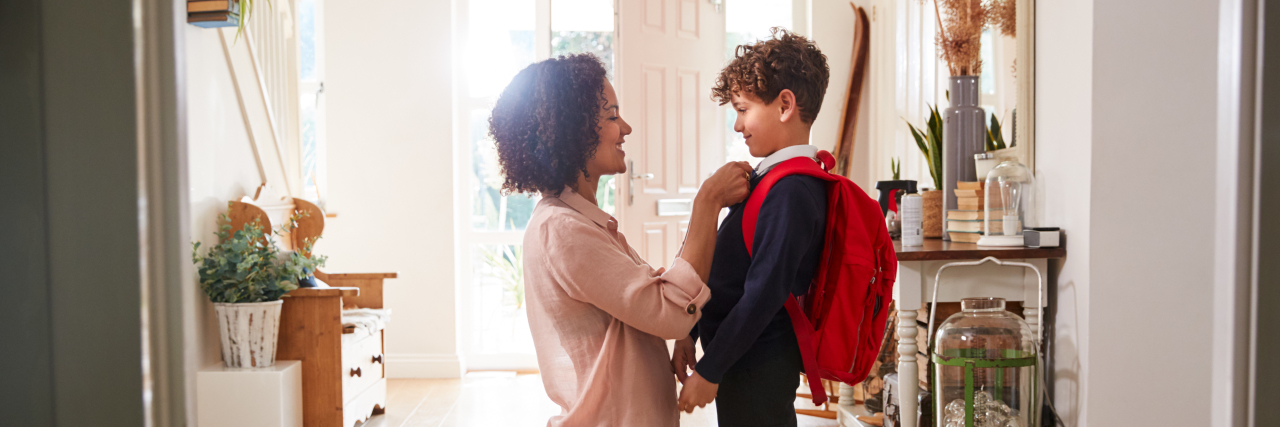My daughter Hayley was recently invited to her first birthday party for a classmate! Not surprising, she’s a lovely little human, and loves making new friends. She was excited, and I was so happy for her. After she received this invitation, I started thinking about friends of ours who have never been invited to a classmate’s birthday party.
You might be surprised to learn how many kids have never made a guest list, particularly kids with disabilities or differences. My son Ryder is lucky to have an amazing village around him, who include him and welcome him to all kinds of events and activities, but not every person with a disability is as fortunate. It takes work on our part to ensure Ryder maintains his social network. It’s not easy to make friends when you can’t speak, but it sure is possible!
Inclusion is multifaceted. It’s about more than being invited to a birthday party, but this is a good place to start talking about diversity, acceptance and inclusion, which have been on my mind a lot lately.
We were at the playground a few weeks ago, and the kids were playing happily. Ryder was chewing on his chewelry necklace, a sensory tool that provides something safe and clean to chew on. It helps calm him and keep him regulated. As he was chewing so intently, he was also drooling. We’re used to it; a little drool isn’t a big deal around here, but my heart sank when I overheard some kids talking about him.
“Eww,” a little girl exclaimed. “That kid is chewing on a Lego piece and he’s slobbering everywhere.” I smiled and stated that a little drool probably wasn’t the worst thing you might find outside on the playground.
Truthfully, I didn’t know what to say in that moment. I felt sad for Ryder, and I felt mad that those kids laughed at him, but I also realized those kids probably didn’t understand. They might not have anyone in their lives with a disability. They might not talk about diversity at home. Or maybe they were just being rotten, as kids and adults sometimes are. Whatever the case, it’s been on my mind and I’ve been thinking a lot about how to encourage parents to talk to their kids about people with disabilities. I think it’s an important step in creating and practicing inclusion.
We need to teach our children that every person matters, no matter their abilities. We all contribute something to the world. Even adults need reminding of this sometimes. We also have to explain that everybody is different and different is not less.
Younger kids don’t need an elaborate explanation, just a simple conversation about differences. I always try to answer Hayley’s questions honestly and in a way she’s able to understand. For example, when she asked why a big kid might need to wear diapers, I explained to her that everyone is different and not everybody’s bodies or brains work the same way. I told her that some people just need a little more help, and that’s OK!
Just the other day, we met a little guy who was nonverbal, and Hayley asked why he didn’t talk to her. I was a little amused, considering the fact she has a big brother who is nonverbal, and I smiled when his mom replied that he “communicates in other ways, but he can hear you and play with you.” I think it’s so great when we, as parents or support people, can answer kids’ questions in a simple, positive way.
If your kids do ask questions about somebody’s differences, even in public, and even in a way that is slightly, or absolutely ridiculously embarrassing, answer them. “Everybody is different,” is my go to, at least until we can have a deeper conversation about it. If your child does ask something that makes you want to run away, don’t run, just smile and say hello.
Another great answer I use is, “I’m not sure, but we can still say hello to them.” For example, this would be particularly useful if your child has just asked, loudly, “Why is that guy riding in a baby stroller? Is he a baby?” and you’re sure “that guy” and his mom heard the question as clear as day. This may or may not have happened to us. Insert wink here.
There are some differences that are almost impossible not to notice, and that’s OK. It’s human nature to be curious, and that’s OK too. Have you ever noticed someone with visible differences, looked at them, and then looked away as fast as you could? It’s OK. You probably didn’t know what to do or say. Maybe you didn’t want them to think you were staring. You don’t have to say anything, but please smile! Treat everyone you meet with kindness, dignity and respect.
In our house, being different is where it’s at. We’re lucky to have all kinds of beautiful humans in our life, yet we still talk about what it means to be different. We also talk about what makes us the same. We’re all human. We all want to play and laugh and make connections with other people in the world. There will be many more of these conversations to come, of that I’m sure. As Hayley grows, her questions about her brother change. Her understanding of him changes.
Even if you think your kids know about diversity and differences, make a point of talking about it anyway. Let them know it’s OK to be different. Teach them to embrace their own differences! We all know that no two people are the same. None of us know the perfect thing to say at any given moment, myself included, but by talking about differences and teaching our kids to be accepting of those differences, we’re off to a great start.
Getty photo by monkeybusinessimages.

